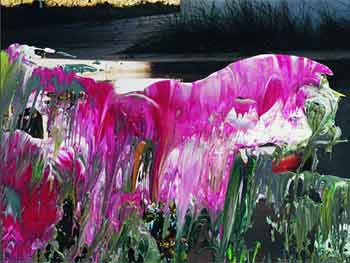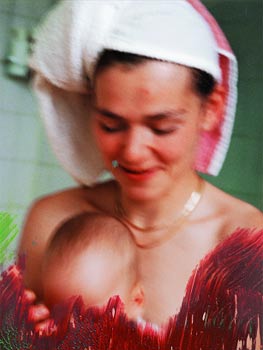The Fundación Telefónica surveys Gerhard Richter’s output in the past 20 years through 400 works, some of them never before seen

Gerhard Richter
5. März 03, 2003
Privatbesitz Deutschland
From the 4th of June to the 30th of August at the Sala de Exposiciones Fundación Telefónica, Madrid
Curators: Sergio Mah y Markus Heinzelmann
Works: 410
An extensive selection of Gerhard Richters works rendered between 1989 and 2008 has been on display at the Fundación Telefónica since the 4th of June as part of the official programming of PHotoEspaña 2009.
FUNDACIÓN TELEFÓNICA
C/ Fuencarral, 3
Madrid (España)
The show features more than 400 painted instant snapshots, some of never before shown in public, which bear witness to the crucial role played by painted photographs in this German artists career, halfway between his figurative output and his abstract works.
We know that the emergence of photography in the mid-19th century gave rise to heated debates on whether or not these new images could be considered a faithful reflection of reality, whether or not photography could be considered a new kind of art, and if so, whether this would signal the end of traditional pictorial representation. The passage of time has led photography to become a part of museum collections, and it has won the status of an independent art genre, a genre that has not only not displaced painting but that in fact engages in dialogue with painting in the oeuvre of many artists. In the works that Richter is showing in Madrid, all of them small-format, the artist draws simultaneously from painting and photography procedures to describe his everyday, private life. In the images that comprise “Fotografías pintadas” (Painted Photographs), he acts on the original instant snapshots using a variety of painting techniques: sometimes he drags certain fragments of the photograph over still-wet paint so that the layers of oil form drawings with different textures and densities on the resulting work; other times, he places the photograph on a certain spot on the edge of the spatula and spreads paint over it, or he sprinkles drops of color over the snapshot or immerses the picture in diluted shellac. The multidisciplinary output of Gerhard Richter, born in Dresden in 1932, often offers unexpected associations that situate viewers between the public and private, the realistic and the abstract, and beckons them to reflect on whether what they are seeing can be regarded as a faithful copy or the artists subjective intervention. After working as an advertising and stage painter, Richter studied at his native citys Fine Arts Academy. During that period, he made a number of murals that were later painted over for ideological reasons when he had to flee from East Germany to seek refuge in the West. Since the early 1970s, his work, which shows influences from American Abstract Expressionism and Pop Art, has often been exhibited in Europe and the U.S.A. In 2002, New Yorks MoMA devoted a sweeping retrospective to his oeuvre, the most extensive one that this museum has ever held for a living artist.





